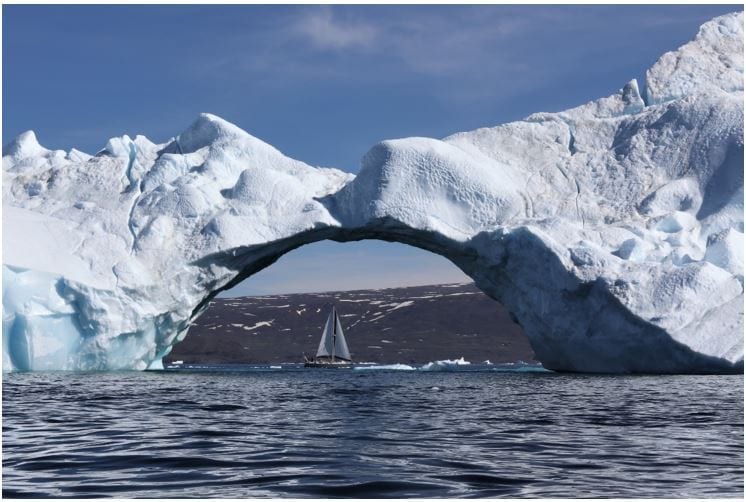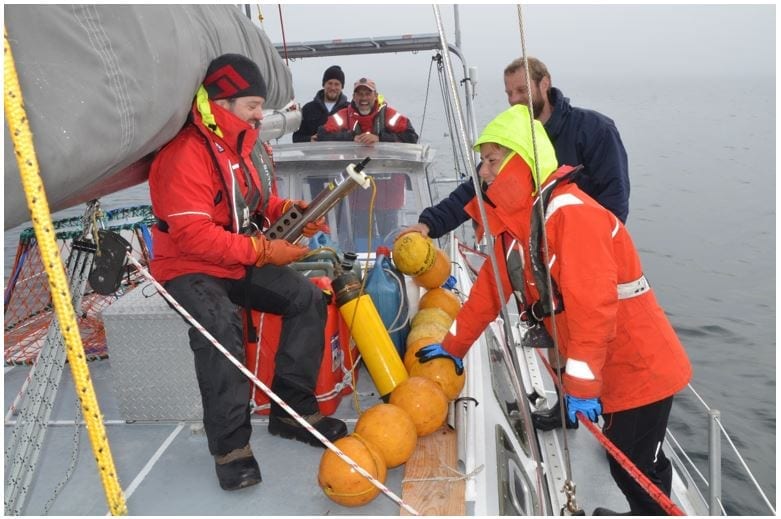Post-adventure Q&A with crew leader, Nicholas Peissel

Over the past six months, we’ve followed the Mission Arctic crew members as they sailed across the world, battling inclement weather and dangerous conditions in a race against time to complete an epic mission. The team sailed during the Arctic’s brief thawing period and used Lenovo Think-branded products to help guide the way through the treacherous glacial waters.
We chatted with Nicholas Peissel, expedition leader, Gareth Carr, the ground crew member who kept the team virtually connected to dry land, Dr. Dan Carlson, the resident science officer, and Dr. Ulyana Horodyskyj, the experienced glaciologist. Each offered his or her own unique perspective on the journey, giving us a glimpse into life during this unprecedented expedition.
We’re catching up with Nicolas Peissel for one last chat about the team’s adventure and what they’ll do with the research they gathered during three-and-a-half months at sea. The crew members will be on dry land until May, when they’ll depart on the Mission Arctic 2018 archaeological research adventure: “Searching for Bones.”
Lenovo: What are a few key takeaways from “Into the Melting Ice,” the 2017 expedition?
Nicholas Peissel: The “Into the Melting Ice” expedition focused primarily on researching scientific aspects of the Arctic’s land and sea. Unfortunately, it confirmed what we already feared: there is a massive amount of Arctic melt and erosion taking place, creating Arctic sea ice and severely changing the ecosystem. I visited some of the same fjords a few years prior and after returning only a short while later, I saw significant erosion and depletion. Throughout the trip we conducted scientific surveys and collected research from fjords and previously untapped areas of the Arctic region. We saw glaciers terminating on land, and this shows the severity and massive changes to our planet. Our team worked to uncover reasons for these changes in hopes of preserving the Arctic ecosystem.

Lenovo: How will the team leverage the research and information gathered from the 2017 expedition?
NP: We travelled more than 7,000-nautical-miles over the summer and early fall up the coast of Greenland and down the coast of North America to get a well-rounded view of what is happening in the Sea of Labrador and in that specific region of the Arctic. Amazingly, we sailed one-third of the way around the world in three-and-a-half months, conducting experiments, dropping scientific equipment into the water to discover how the melting ice impacts the mixing effect that drives global ocean currents and tracking the movement of icebergs. We sent the plethora of research and data we gathered to the International Arctic Research Center. It will take months to analyze and interpret, but eventually the data will let us better understand what is happening along the coast of Greenland and help inform future research endeavors.

Lenovo: What were some of the biggest challenges during the mission? Did you have any unforeseen setbacks?
NP: Navigating through the Arctic regions with dangerous weather—extreme winds and freezing conditions—made for a challenging voyage. We did our best to navigate as safely as possible, but Mother Nature truly rules up there; she gets the final word every time. On two occasions we almost lost the boat, due to an unfortunate encounter with violent winds and heavy pack ice. On top of periodic inclement weather, the overall timing of our journey was also difficult. The Arctic thaws for a very small window, specifically in the Canadian Arctic, giving us a limited amount of time to travel and accomplish all our research needs.
While we encountered various difficulties, technology helped prevent even more setbacks and helped us overcome many of the challenges. For example, we ran GPS on the Lenovo ThinkPad X1 Tablet—it was in the cockpit and the lower deck, helping us navigate through dangerous weather. We used the Lenovo ThinkPad T470 and Yogas to predict wind, and downloaded files that modeled the type of wind we would be facing in the coming weeks. We used all the Lenovo products for videoconferencing on Skype, to download data from the various instruments and more. For the duration of the trip we were also in coordination with the Canadian Ice Services, which used satellites to take custom photos of the sea ice in the direction we were sailing. We then downloaded them onto our computers and used the images to navigate safely.
It’s incredible how the products held up through our more than 7,000-mile journey. In the past I’ve gone through three tablets for a 2,000-mile journey, so it was truly amazing that our durable Think products lasted for such a long time and in such difficult conditions.

Lenovo: Can you share a few of the team’s greatest successes and feats accomplished during their time at sea?
NP: A year ago, the International Arctic Research Center (IARC) used large icebreakers to drop deep sea instruments to the ocean floor. Our team was tasked with retrieving these instruments. We sent signals for the instruments to release themselves from the ocean floor and battled heavy fog, 12-foot waves and pack ice to gather them. We were thrilled to successfully retrieve each instrument and to send the data that they’d been collecting over the past year to the IARC.
Our team reached over 80 degrees of latitude through the open water. To give a point of reference, the North Pole is 90 degrees of latitude; we were only about 550 nautical miles away from the North Pole. We sailed one-third of the way around the world in three-and-a-half months—all while collecting data to gain better insight into the Arctic melt and erosion, in an effort to understand (and halt) the dramatic changes currently taking place in the region.
Lenovo: We’re excited for Mission Arctic’s 2018 Adventure. Can you give us a sneak peek into the next mission, “Searching for Bones?”
NP: During the 2017 “Into the Melting Ice” expedition we focused mostly on scientific measurements, while “Searching for Bones,” the 2018 mission, will focus more on archaeological research. We’ll be using technology such as drones, underwater automated vehicles and helicopters as we push into the Canadian Arctic, searching for the most northern wooly mammoth remains in North America, expedition sites from the 19th century and lost explorers.
To stay up-to-date with Mission Arctic news, follow the adventures on @MissionArctic and Mission Arctic’s website.
Tags
lenovo yoga mission arctic; arctic research center; think pc; expedition
